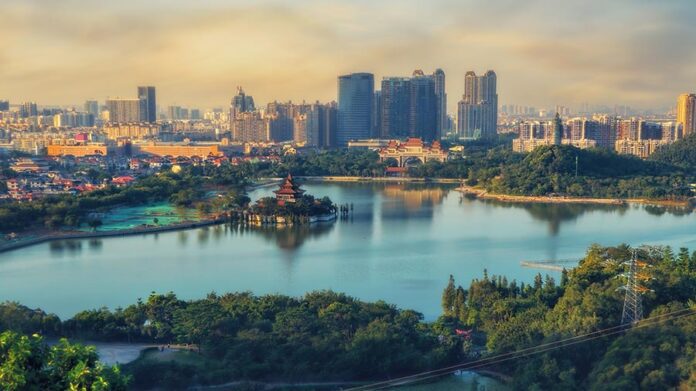The Greater Bay Area is well on its way to becoming a significant economic hub of the twenty-first century. It possesses the key elements of an economic powerhouse, including infrastructure, a large market, and a supportive government. This means if fully developed it can be expected to contribute significantly not only to China’s GDP but also to the global economy as a whole.
In recent years there has been a great deal of hype arising from the Greater Bay Area (GBA) of China which is rapidly emerging as one of the world’s fastest-growing economic regions. Its GDP has grown from 1.2 trillion dollars in 2012 to 2 trillion dollars in 2022. Renowned figures like Christine Lagarde have labeled it a game-changer for China. However, will the region live up to what is being promised?
The GBA encompasses nine cities and the two special administrative regions of Hong Kong and Macau, covering an area of 56,000 square kilometers and housing a population of 71 million. It boasts industries such as finance and technology and has developed robust infrastructure, positioning it as a transport hub connecting China to the rest of the world. The Chinese government has made significant investments in the GBA, aiming to establish it as a global center. Integration efforts are also underway to enhance cooperation among its diverse parts.
Several factors contribute to the GBA’s rapid growth, including a young, well-educated, and skilled workforce. It possesses the key elements of an economic powerhouse, including infrastructure, a large market, and a supportive government. Now, it appears that foreign investment is becoming another critical component of the GBA’s development.
Saudi Arabian investors have recently taken an interest in the GBA. Abdullah Bin Abiyah, the Consul General of Saudi Arabia in Guangzhou, expressed that the GBA will be the “future of Asia” and the “world’s technology center.” He highlights Shenzhen as a prominent tech city, Hong Kong as a global financial center, and Macau as a city of culture within the GBA. When the consulate approached the Guangdong government regarding investment opportunities, they received a list of over 600 projects to consider.
During the 10th Arab-China Business Conference, Saudi Arabia signed deals worth ten billion US dollars across 30 cooperation agreements. Moreover, the King Abdullah University of Science and Technology also formed cooperation agreements with several Chinese universities, signaling the deepening ties between China and Saudi Arabia at a time when US-China relations are strained. Abiyah believes that issues such as; taxation discrepancies across Guangdong, Hong Kong, and Macau will be resolved by 2025.
Despite the current frosty China-US relationship, American venture capital remains highly active in Shenzhen’s market, with estimates placing US investment at around 100 billion dollars. Japanese investment; is estimated at 50 billion dollars. While the Middle East appears to be getting involved in the GBA, its stake is not yet substantial. The GBA, with its promising future, attracts a multitude of competitors for Arab capital due to the endorsements of influential figures.
Tim Cook, CEO of Apple, stated that the GBA is “one of the most dynamic and innovative regions in the world” and expressed excitement about contributing to its growth as a leading global technology hub. Eric Schmidt, the former CEO of Google, referred to the GBA as the next Silicon Valley, emphasizing its strong economy, talented workforce, and a supportive government.
However, there is no such thing as perfection. China is already experiencing a reduction in its historical GDP growth, were the Chinese economy to suffer stagnation, these plans would face a significant degree of problems. There are also environmental problems as the GBA is densely populated and thereby faces problems like air pollution and water scarcity. Lastly, there is the ever-present threat of technological disruption.
While there exists the possibility of failure, it is not probable. The Greater Bay Area is well on its way to becoming a significant economic hub of the twenty-first century. It is much larger than the Tokyo Bay area; which is 36,898 square kilometers, and the New York Bay area; which is 17,405 square kilometers. The same goes for the population, almost double compared to Tokyo Bay’s 37.4 million. This means if fully developed it can be expected to contribute significantly not only to China’s GDP but also to the global economy as a whole.




